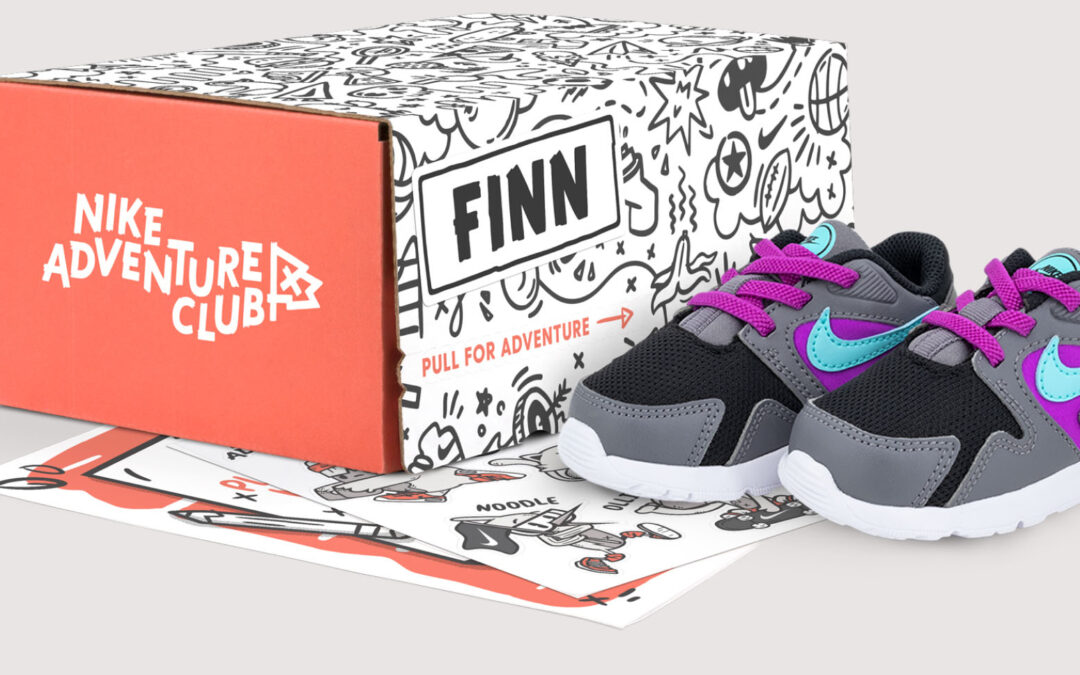This month, Nike will be shutting down its kids’ subscription operations, Nike Adventure Club, nationally launched in 2019 after a pilot for the service began in 2017.
Good Insights
The service was based on what seems like a strong insight, which other services like Rockets of Awesome were launched upon: kids grow out of their clothes before you’ve managed to film an unboxing of their latest shipment, and purchasing clothes, trying them on etc., can be a time-consuming task.
Shoes, on the other hand, are ruined even before the size becomes an issue; and in some circles, young kids’ attention to shoes rivals that of designer bags in Crazy Rich Asians. So the need for convenient, affordable and on-trend service was clear and for me, as a parent, exciting: I don’t have to remember to examine the wear and tear of my 4 kids’ shoes, nor do I have to remember their sizes or throw out the shoes into the landfill. For a monthly fee, Nike will take care of those feet and the environment.
For Nike, or any company, these subscriptions offer a lot of value. Instead of competing for the consumers’ attention with each and every purchase opportunity, the consumer is locked in. Revenue stream can be more predictable and data for future development and targeted sales – is just as valuable.
Lacking in Execution
For their loyalty, consumers expect to be granted a better price, rewards, and/or VIP only offers. Other fashion subscription services – Stitch Fix being the leader of the pack – styling and personalization are offered. But this is where Nike failed to deliver.
With multiple websites to choose from, and “24 hour only” huge sales (returning every 48 hours), I’d actually have to work hard to buy a pair of Nike shoes for $60, which was the price I would pay with a $20 a month subscription for 4 pairs a year. I didn’t see any “VIP” and “special club drops” offered, and even so, I believe most parents would forgo the chance of having their kids sport the latest fashion when they can save hundreds of dollars instead. And those who are not price-sensitive might opt for less mainstream brands. So – value for money was low.
Second, Nike targets people who are e-commerce savvy already. Not only are these clients brave enough to buy something as taunting as kids’ shoes (“mom I hate it it’s itchy / it’s light pink I want bright pink / it’s too big and too small / it’s too sparkly / it’s not sparkly enough”) – but they are also adopters of fashion subscription services. These people don’t waste time going to stores – for them, shopping, returning and replacing is as easy as choosing a show on Netflix (minus the 90 min ceremony of choosing a show on Netflix). So the value of having shoes sent over is, once again, limited.
But beyond all this, Nike apparently didn’t care enough to hone its targeting and marketing nearly the way it does in any other aspect of its business. For example, the website offered shoes in sizes fitting older kids and even teens as well as toddlers, but the marketing communication concentrated on 3 to 10 years old; then, the added value was the cute activity packets and content offered to subscribers – which wasn’t necessarily attractive or alluring to kids in this demographic (and did not provide an upside to compensate for the price and loyalty).
But even with all those caveats, Nike could have made it work. The company did very little to market the club, generate insights or hone its value proposition, areas where it is, beyond any doubt, very capable.
Instead, it decided to shut down the operation.
The Fashion Subscription Opportunity
Fashion subscriptions can provide real value for consumers and for competitors, but it is indeed a tricky business. Take Stitch Fix the company reported revenues of $1.77 billion for the year ending August 2020, with 3.5 million active members, compared to $1.58 billion for 2019 and 3.2 million active members – demonstrating that US consumers are willing to pay for styling and direct-to-consumer fashion. But Stitch Fix’s bottom line was a loss of $ (67.1) million, compared to net income of $ +36.9 million for the fiscal year ended August 3, 2019, due to growing operating expenses.
Nike’s opportunity in the subscription business can be enormous – but it should consider reaching out to adults, rather than to children. Over 110 million people in the US walk and power-walk for fitness; 60 million run/jog. For adult athletes – whether professional or not – changing shoes at the right time is crucial.
With so many connected devices and wearables, from watches and bands through steps and miles tracking apps to Peloton equipment, Nike can learn everything about the length of stride, number of miles accumulated, and timing of change, to offer personalized fitness advice and products to the amateur athlete. This type of service is on-trend with the demand for mainstream “concierge” services (we all want to be treated like pros), and the awareness for fitness and bone/joint health.
People would be probably more open to splurging on sneakers when their mobility and performance depend on it, rather than for their kids to be able to show off their kicks at the playground.









This site was great for broke parents like me who can afford store price shoes please come back lol